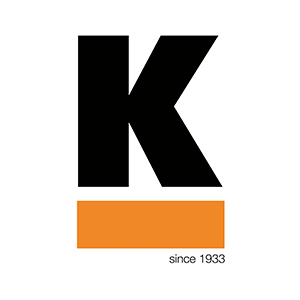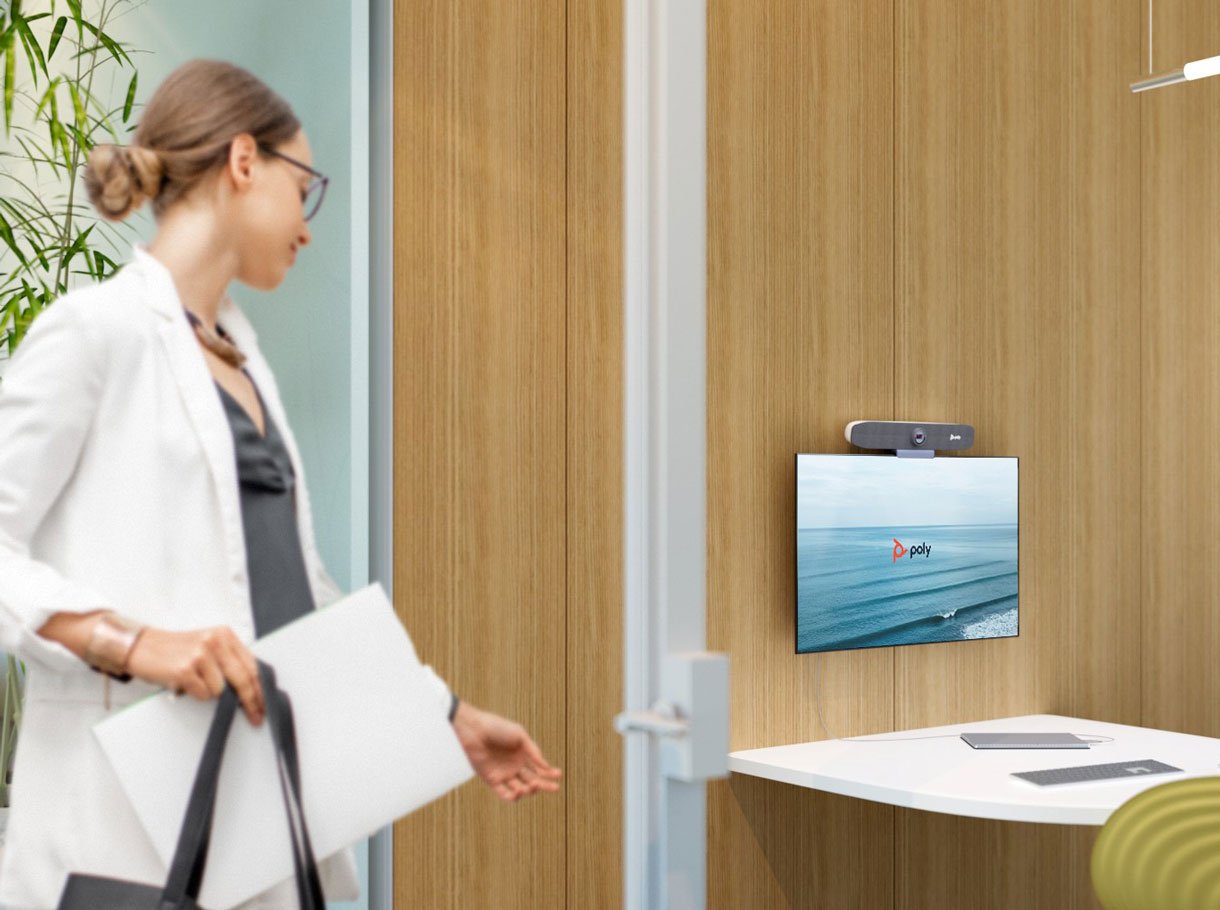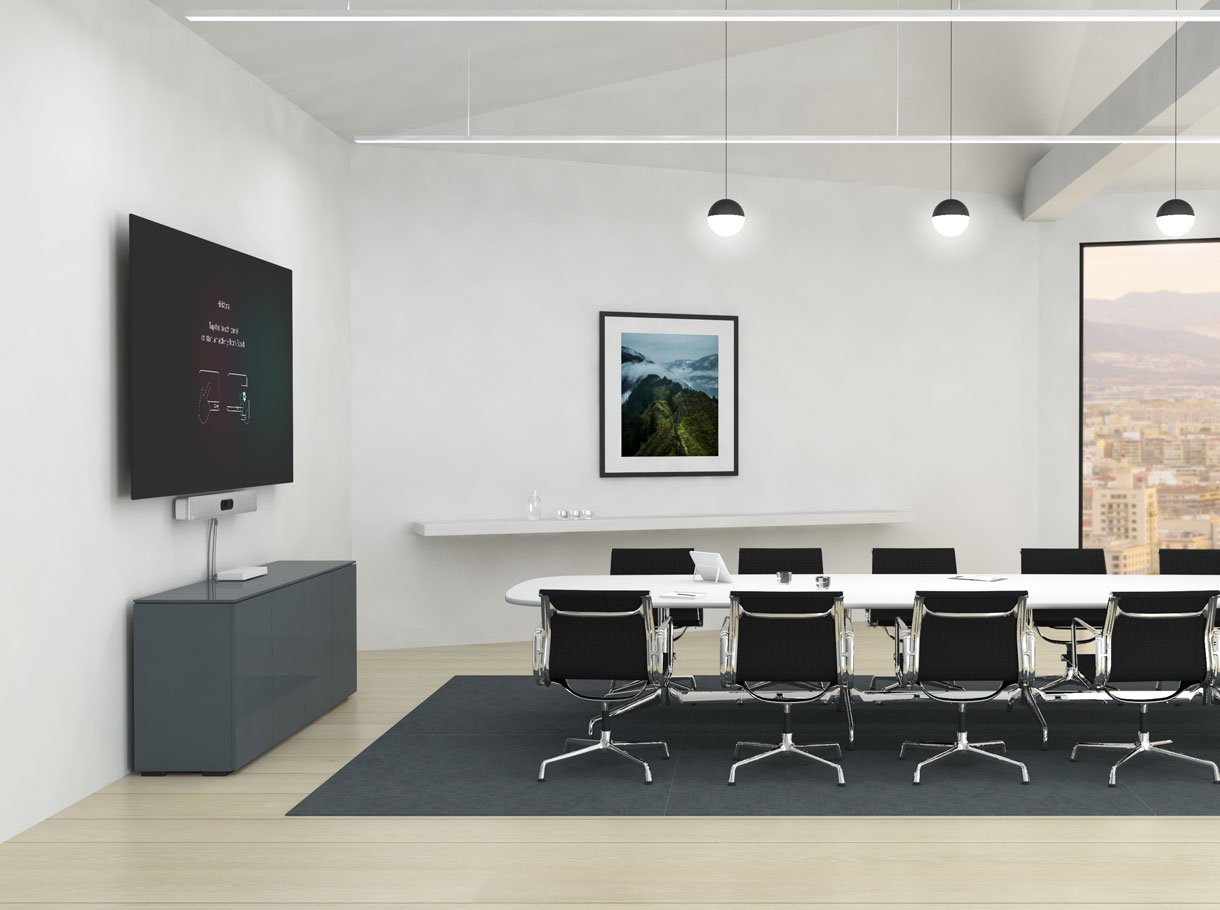
Even after more than three years of intensive digital working, most companies still regularly struggle with technical problems - and lose an average of seven valuable minutes per online meeting or presentation as a result!
You probably know the situation: There are four of you in a virtual meeting and you don't know how to position the laptop so that everyone can be seen. You may even have a room camera that solves this problem, but then the sound or lighting conditions are affected by various aspects in the room. If you try to order the necessary technical elements individually and set them up yourself, you end up with a tangle of cables that can make you almost despair. In addition to furnishing the individual workplace, the Modern Work concept also deals with the furnishing of technically professionally equipped rooms in which people can work efficiently and smoothly. We explain to you why a complete solution is worth considering as a minimum - and that it is not as cost-intensive as you might imagine.
New requirements due to advancing digitalization
The pandemic has changed a lot in terms of work. We have gone completely digital or at least hybrid. For a long time, we worked from home and some of us still do. Even after the pandemic is over, certain aspects of this digital way of working will remain and companies are now being forced to act. The term "modern work" is currently on everyone's lips. This concept envisages a company creating contemporary working conditions for its employees so that they feel completely at ease and can work efficiently. In the course of digitalization in general and now in the last two years in particular, employees' expectations of their company have changed, especially with regard to where they work: even though it would theoretically be possible to return to the office full-time, many employees still want to do some of their work from home - which is certainly possible thanks to virtual working. This saves both employees and employers valuable time and therefore resources. The commute to work and car journeys to customer appointments are eliminated - and so is the company car that is no longer needed.
New technical challenges
Virtual working therefore certainly has its advantages, but it also poses challenges for a company. In an open-plan office, the increasingly frequent calls are a considerable disruptive factor for the other people present. Retreats in small rooms, so-called huddle rooms or separate call meeting rooms are required. Large meetings sometimes require conference rooms that should be just as easy to use as your own laptop. Employees are usually not aware that communicating with other people at a separate workstation or in a conference room places largely different demands on the camera, microphone and loudspeaker. The technical aspect therefore plays a central role. As a company, you don't want to have to spend valuable time setting up rooms again and again or solving technical problems. On the contrary: everything should work the way you want it to at the time.
The first steps towards modern technology
A company that wants to adapt its technology in line with the Modern Work concept should consider various points. As a first step, it is important to define what Modern Work actually means for your own company. It is essential to involve employees - at all hierarchical levels - in this process. In this way, needs are identified and can be addressed appropriately. How often is it still useful, desirable or mandatory for employees to be in the office and what demands do they have of the working environment? How often are separate rooms needed for meetings and in what size? At the same time, it is important to carry out a detailed assessment of the current situation, whereby the input of employees is also very valuable here. What technical requirements already exist? What is absolutely necessary for the future and will benefit the company? What is feasible and what makes sense? What is currently not working and needs to be changed?
The search for the optimal solution
Once the needs have been identified and the status quo has been scrutinized, the next step is to find a suitable solution. It is fundamentally important that this is holistic and has no system breaks. It should create the following optimal conditions for a meeting in each room concerned: The picture, lighting and acoustics are right first time and you only need to dial in at the touch of a button. The picture and sound quality are consistently high and there are no interruptions or echoes. You are also protected against cyber attacks. Finding such a complete package is not always easy, which makes it the right time to bring a professional on board. Technical aspects are often underestimated and people are tempted to order and set up the various elements individually, which can lead to a considerable loss of time. Finding a partner who can install a standardized solution saves time and nerves - and ultimately resources! By setting up a room so that a meeting can be started at any time at the touch of a button, smoother and more efficient working is ensured. Seven minutes are saved per meeting and participant, which is quite a lot of time over a whole year that you can fill with important things! What's more, many of today's solutions are software-based and therefore, contrary to the preconception that technology is incredibly expensive, quite cost-effective: an enormous improvement in quality can already be achieved with a sum of 1,000 to 5,000 per room.
Finding the right solution with Kilchenmann
As you can see, digitalization and, not least, the pandemic have brought with them technical requirements that a company should address as part of a modern work concept. Do you also want a technology solution that works smoothly and enables your employees to work efficiently? We would be happy to look at the various options available for your company with you. Contact us today, we look forward to working with you!
This might also interest you: Blog post "Modern Work: Interview with Gale Bronson, specialist at Mobiliar"



